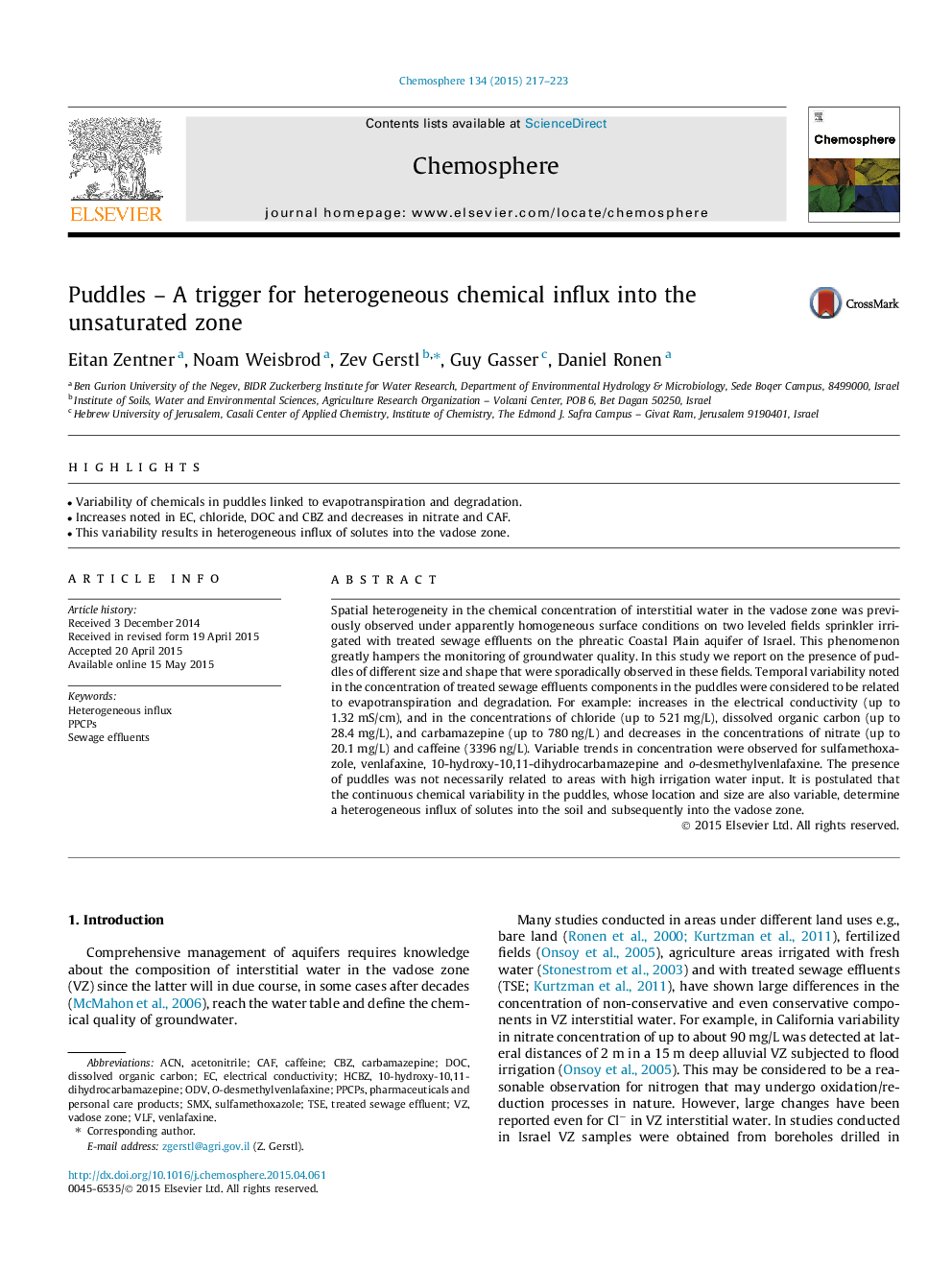| Article ID | Journal | Published Year | Pages | File Type |
|---|---|---|---|---|
| 6307659 | Chemosphere | 2015 | 7 Pages |
Abstract
Spatial heterogeneity in the chemical concentration of interstitial water in the vadose zone was previously observed under apparently homogeneous surface conditions on two leveled fields sprinkler irrigated with treated sewage effluents on the phreatic Coastal Plain aquifer of Israel. This phenomenon greatly hampers the monitoring of groundwater quality. In this study we report on the presence of puddles of different size and shape that were sporadically observed in these fields. Temporal variability noted in the concentration of treated sewage effluents components in the puddles were considered to be related to evapotranspiration and degradation. For example: increases in the electrical conductivity (up to 1.32Â mS/cm), and in the concentrations of chloride (up to 521Â mg/L), dissolved organic carbon (up to 28.4Â mg/L), and carbamazepine (up to 780Â ng/L) and decreases in the concentrations of nitrate (up to 20.1Â mg/L) and caffeine (3396Â ng/L). Variable trends in concentration were observed for sulfamethoxazole, venlafaxine, 10-hydroxy-10,11-dihydrocarbamazepine and o-desmethylvenlafaxine. The presence of puddles was not necessarily related to areas with high irrigation water input. It is postulated that the continuous chemical variability in the puddles, whose location and size are also variable, determine a heterogeneous influx of solutes into the soil and subsequently into the vadose zone.
Keywords
Related Topics
Life Sciences
Environmental Science
Environmental Chemistry
Authors
Eitan Zentner, Noam Weisbrod, Zev Gerstl, Guy Gasser, Daniel Ronen,
